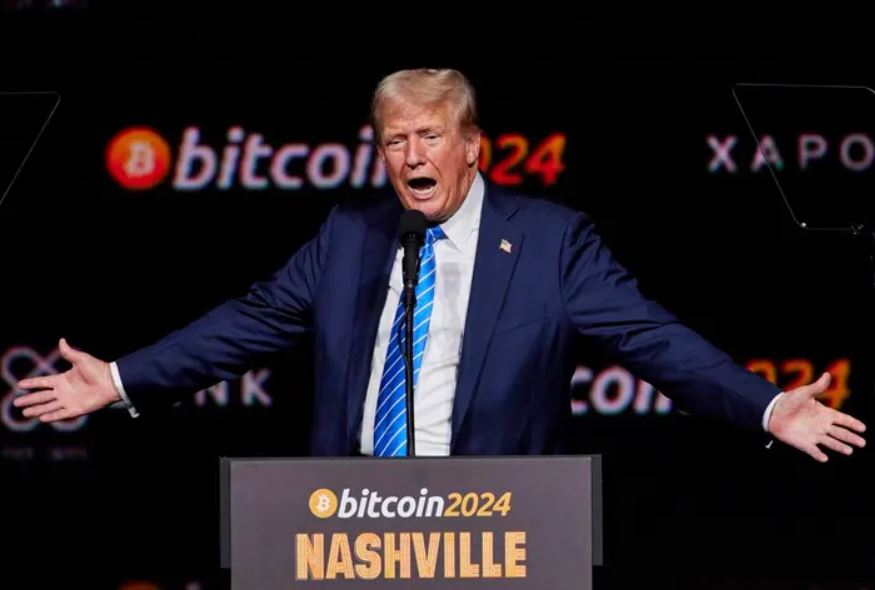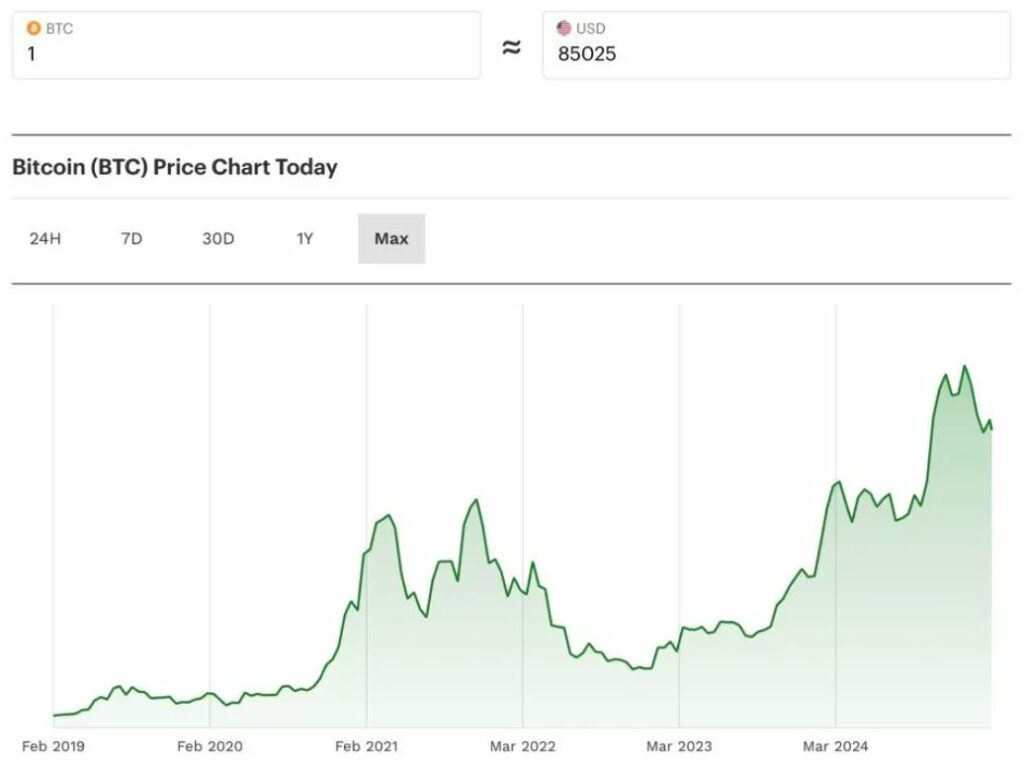
The cryptocurrency market is on edge as U.S. President Donald Trump prepares to unveil his “Liberation Day” tariffs, a move that could have far-reaching consequences for global trade and financial markets. Bitcoin (BTC), which has already experienced significant volatility, is currently trading around $85,000, down from its all-time high of nearly $110,000 during Trump’s inauguration.
With Trump’s tariff announcement scheduled for 4 PM ET at the White House Rose Garden, analysts warn that the crypto market could experience sharp price movements, with some predicting a potential downturn in the short term.

Trump’s Tariffs and Their Impact on Bitcoin
The global financial landscape is preparing for a shake-up as Trump’s tariffs are set to take effect. The move, aimed at reshaping U.S. trade policies and reducing dependence on foreign economies, could have unintended consequences for risk assets like Bitcoin.
According to Zach Burks, CEO of NFT company Mintology, Trump’s “Liberation Day” could act as an “atomic bomb” for markets.
“Trump’s tariffs will create significant volatility across financial markets, and Bitcoin won’t be spared in the short term,” Burks said.
He emphasized that Bitcoin is increasingly becoming the “doomsday asset of choice” for retail investors, while institutional investors favor gold as a safe-haven asset.
Trump’s influence on the crypto sector has been growing. He has publicly supported a U.S. Bitcoin reserve and crypto stockpile, and his financial ventures, such as World Liberty Financial and Trump Media and Technology Group, signal his increasing involvement in the digital asset space.
Bitcoin’s Recent Performance and Market Sentiment
Bitcoin has been experiencing mixed price movements in the past few weeks, reflecting uncertainty in both traditional and crypto markets.
Bitcoin’s price fluctuated between $76,600 and $94,500 over the past month.
Major altcoins like Ethereum (ETH), Dogecoin (DOGE), and Cardano (ADA) have seen price gains of over 5%-7% recently, while other major assets, including XRP, Solana (SOL), and Binance Coin (BNB), remain relatively stable.
The overall crypto market capitalization decreased by 3%, according to CoinGecko data.
The broader financial markets are also showing signs of stress. The S&P 500 dropped 3% last week, its worst performance since September 2023. Meanwhile, gold has surged to record highs, reflecting a shift in investor sentiment toward safe-haven assets.
Institutional Investors and the Role of Bitcoin in Economic Uncertainty
Trump’s trade policies are increasing uncertainty about inflation and economic stability. As a result, crypto investors have mixed opinions about Bitcoin’s future.
Gadi Chait, an investment manager at Xapo Bank, believes Bitcoin’s recent struggles are mainly due to unpredictable economic policies and changing institutional involvement.
“Bitcoin traders have been preparing for this moment, so a short-term price drop would not be surprising,” Chait said.
He pointed out three key factors that are affecting Bitcoin’s price.
First, there is a clear divide between speculation and long-term investment. Many traders are being cautious because Bitcoin’s price is influenced by short-term speculation and slow-moving regulatory changes.
Second, inflation fears are increasing. If the new tariffs push inflation higher, investors may shift their money to traditional safe-haven assets like gold.
Third, there is an institutional pullback. Some institutional investors may decide to reduce their crypto holdings temporarily due to market uncertainty.
Bitcoin’s Key Support and Resistance Levels
Traders and analysts are watching Bitcoin’s price closely. If Bitcoin drops below $76,600, it could signal a major shift in market sentiment, leading to further declines.
On the other hand, if Bitcoin stays above $85,000, it could trigger a short-term rebound. This is especially true if institutional investors remain confident in Bitcoin.
While short-term price swings are expected, some experts believe Bitcoin’s long-term outlook remains strong.
Zach Burks, CEO of Mintology, warned that the market could see a dip. He predicted that Ethereum (ETH) might fall to $1,600 if global markets react negatively to Trump’s tariffs. Bitcoin could also drop below $80,000 before stabilizing.

Despite these concerns, Burks remains optimistic about Bitcoin’s future.
“In the long run, Bitcoin will thrive as global financial structures shift. The rules of international trade are changing, and crypto will benefit from this transition,” Burks said.
He believes that institutional investors will turn to Bitcoin as a hedge against unstable U.S. economic policies and growing distrust in traditional financial institutions.
Conclusion: What’s Next for Bitcoin?
With Trump’s tariff announcement just hours away, the crypto market remains in a state of uncertainty. Investors and analysts are waiting for key developments.
They will be watching how Trump’s trade tariffs impact global markets, how Bitcoin reacts to potential price drops, and how institutional investors respond.
While short-term volatility is likely, many in the crypto community remain confident in Bitcoin’s long-term strength. The next few days will be crucial in determining whether Bitcoin can hold steady or enter a new period of instability.























